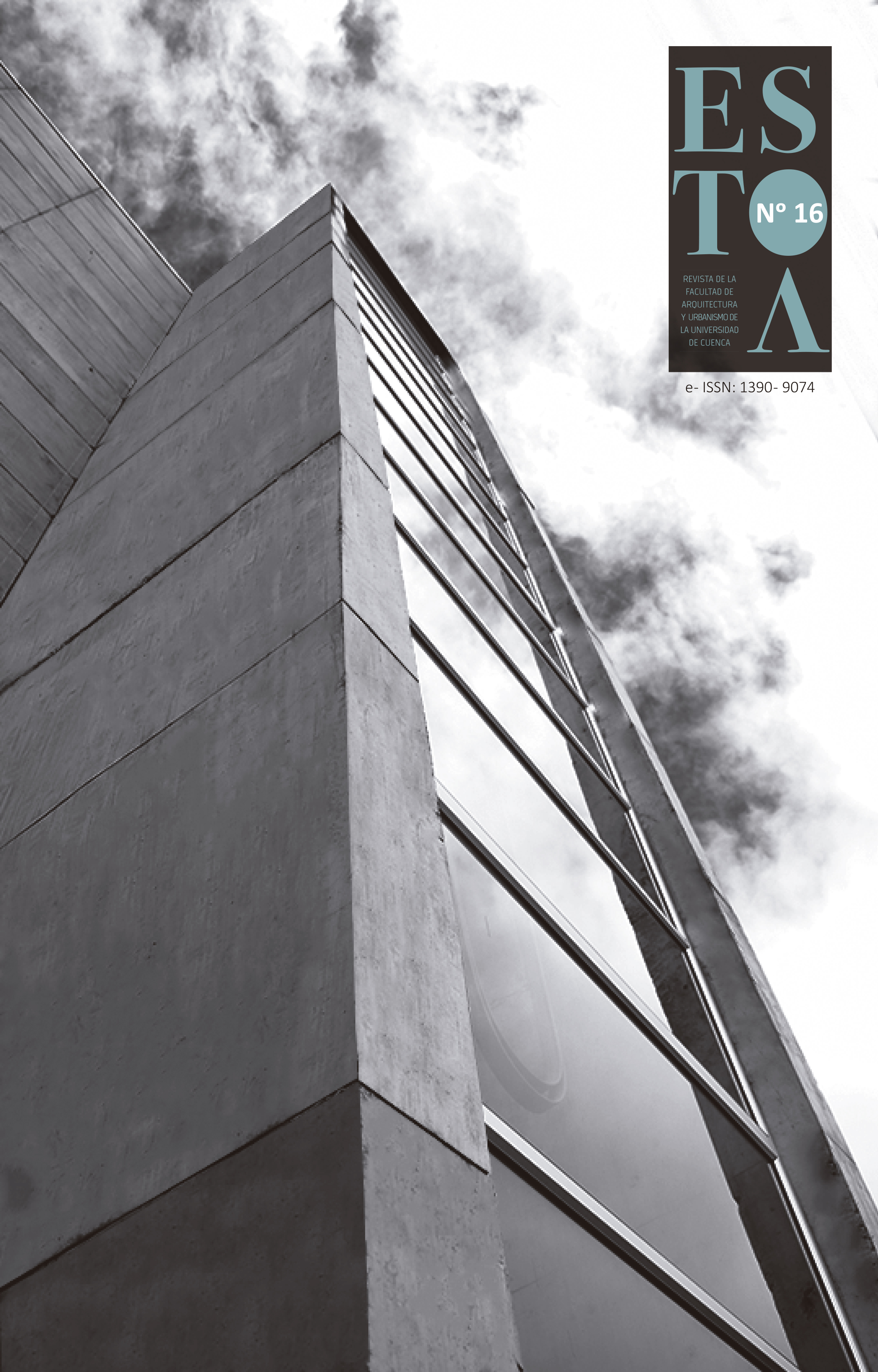Analogical immersion:
discovering spherical sketches between subjectivity and objectivity
DOI:
https://doi.org/10.18537/est.v008.n016.a04Keywords:
Analog drawing, autograph drawing, cubic projection, equirectangular projection, inmersion, virtual realityAbstract
The use of analog graphics has been reduced compared to powerful digital representation. However, the long history of the company generates new paths of evolution. As a result, the autograph goes deep into digital complexity and merges with it. The productions detailed here, which are nurtured by architecture, engineering and information technology, oscillate between subjective impression and the reinterpretation of basic concepts of perspective. They aim to share and disseminate applications, both professional and in the classroom. Specifically, the intuitive and experimental search is proposed: the graphic thought of an immersive spatial representation. This singular representation captures in the two dimensions of a plane the characteristic unfolding of a surface (in particular, that of the sphere and that of the cube) centered on the observer. In other words, it works with two of the most frequent anamorphoses that digital technology uses for virtual reality contents. The aim is to open the doors to new hybrid instruments for design and architectural uplifting, as well as for art and graphic disciplines in general.
Downloads
References
Araújo, A. B. (2018a). Drawing Equirectangular VR Panoramas with Ruler, Compass, and Protractor. Journal of Science and Technology of the Arts, 10(1), 15–27. doi: 10.7559/citarj.v10i1.471
Araújo, A. B. (2018b). Ruler, compass, and nail: constructing a total spherical perspective. Journal of Mathematics and the Arts, 12(2–3), 144–169. doi: 10.1080/17513472.2018.1469378
Arnheim, A. (1954). Art and Visual Perception. A psychology of the creative eye. (2a ed.). California, Estados Unidos: University of California Press.
Barba S. (2014). Tecniche di image editing: un possibile “work flow” per le AP. Roma, Italia: Sapienza Università Editrice. doi: 10.13133/978-88-98533-45-9
Barba, S., Ferraris, R. y Olivero, L. F. (2014). La bitácora de viaje: aprehensión y transferencia en los procesos de aprendizaje. En Á. Melián García (Ed.), El dibujo de viaje de los arquitectos. Gran Canaria, España: Servicio de Publicaciones y Difusión Científica de la Universidad de Las Palmas de Gran Canaria
Barre, A., Flocon, A., y Bouligand, G. (1967). La Perspective curviligne: de l’espace visuel à l’image construite. Paris, Francia: Flammarion.
Cabezos Bernal, P., Cisneros Vivó, J., y Soler Sanz, F. (2014). Anamorfosis, su historia y evolución. EGA Expresión Gráfica Arquitectónica, (23). doi: 10.4995/ ega.2014.2184
Cabezos Bernal, P. y Cisneros Vivó J. (2015). Stereoscopy in Descriptive Geometry books. EGA Expresión Gráfica Arquitectónica, (26) 242-255. doi: 10.4995/ ega.2015.4058.
Cardone, V. (1999). Modelli grafici e modelli informatici. Proiezione e immagine, la logica della rappresentazione. Actas del Seminario Didáctico. Nápoles, Italia: Arte Tipografica.
Della Francesca, P. (1474 aprox.). De prospectiva pingendi (ed. Chiara Gizzi 2016). Venezia, Italia: Università Ca’ Foscari.
Greene, N. (1986). Environment Mapping and Other Applications of World Projections. IEEE Computer Graphics and Applications, 6(11), 21–29. doi: 10.1109/ MCG.1986.276658
Israel, J.H., Wiese, E., Mateescu, M., Zöllner, C., y Stark, R. (2009). Investigating three-dimensional sketching for early conceptual design - Results from expert discussions and user studies, Computers & Graphics, 33, (4), 462-473. doi: 10.1016/j.cag.2009.05.005.
Masetti, M. (2014). La prospettiva e la costruzione dello spazio figurativo. Italia: Youcanprint.
Muñoz Viñas, S. (2004). Teoría Contemporánea de la restauración. Madrid, España: Síntesis S.A.
Pozzo, A. (1693). Perspectiva pictorum et architectorum. Roma, Italia: Typis Joannis Jacobi Komarek.
Rossi A. (2017). Immersive high resolution photographs for cultural heritage. Drawing / Disegno books series. V. 2. Italia: libreriauniversitaria.it
Rossi, A., Barba, S. y Olivero, L. F. (2018). “CubeME”, a variation for an immaterial rebuilding. En Rappresentazione / Materiale / Immateriale. Drawing as (in)tangible representation (pp. 31–36). Roma, Italia: Gangemi Editore International.
Rossi, D. (2018). Brand new: panorama. L’immagine continua per il disegno della realta virtuale / Brand new: panorama. Continuous image to shape virtual reality. En Rappresentazione / Materiale / Immateriale. Drawing as (in)tangible representation (pp. 1389–1396). Roma, Italia: Gangemi Editore International.
Sandnes. F.E. (2016). PanoramaGrid: A Graph Paper Tracing Framework for Sketching 360-degree Immersed Experiences. En Proceedings of the International Working Conference on Advanced Visual Interfaces (pp. 342-343). Bari, Italy: ACM. doi: 10.1145/2909132.2926058.
Trabajos de tesis
Olivero, L.F. (2015). Il rilievo architettonico: le problematiche infografiche, teoriche e pratiche, della fruizione del dato acquisito. Università degli Studi di Salerno, Universidad Nacional de Córdoba.
Donato, C. (2017). Gigakahn, un progetto grafico di documentazione, comunicazione e valorizzazione ispirato al viaggio di Louis Kahn in Costiera Amalfitana. Università degli Studi di Salerno, Universidad Nacional de Córdoba.
Sitios web
Wikipedia. (2018). Cube Mapping. https://en.wikipedia. org/w/index.php?title=Cube_mapping&oldid=837243861.
Wikipedia. (2018). Skybox (Video Games). https:// en.wikipedia.org/w/index.php?title=Skybox_(video_ games)&oldid=825433763.
Olivero L.F., Balčus E. (2018). They're Coming, 360 Handmade Artwork & Music Video. goo.gl/DxxfkF
Van Gogh - The Starry Night VR - 3D 360o experience https:// goo.gl/BS66xK
Visualizador gratuito de imágenes panorámicas equirectangulares sin metadatos https://roundme.com
Proyecto LuFORIA https://www.luforia.com
Simon Sinek & The Millennial Question https://goo.gl/X1yxYb
Fundación, Gala-Salvador Dalí. “Dalí. Estereoscopías. La pintura en tres dimensiones.” Dali exhibitions. Recuperado de https://exhibitions.salvador-dali.org/es/daliestereoscopies/.
Get Sketch 360. (n.d.). Recuperado de https://www. microsoft.com/en-us/p/sketch-360/9p89s 2qlh11t
Published
How to Cite
Issue
Section
License
The Journal declines any responsibility for possible conflicts derived from the authorship of the works that are published in it.
The University of Cuenca in Ecuador conserves the patrimonial rights (copyright) of the published works and will favor the reuse of the same ones, these can be: copy, use, diffuse, transmit and expose publicly.
Unless otherwise indicated, all contents of the electronic edition are distributed under a Creative Commons Attribution-NonCommercial-ShareAlike 4.0 International License.




